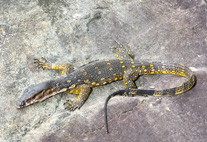Abstract
Teresirogas Quicke & Shaw gen. nov. (type species T. australicolorus Quicke & Shaw sp. nov.) is described and illustrated, based on a series recently reared gregariously from a cocooned mummy of an unidentified species of Limacodidae collected under loose Eucalyptus bark in New South Wales, Australia. Older reared and unreared congeneric specimens represent four additional species, T. billbrysoni Quicke & van Achterberg sp. nov., T. nolandi Quicke & Butcher sp. nov., T. prestonae Quicke & van Achterberg sp. nov., and T. williamsi Quicke & van Achterberg sp. nov., which are also described and illustrated. Three of these additional species have also been reared from Limacodidae cocoons on Eucalyptus, with one, perhaps erroneous, record suggesting a saturniid host. Molecular analysis confirms the placement of the new type species of Teresirogas in the tribe Rogadini, as inferred initially from the claws with pointed basal lobe and host relationships of some of the species, but one species has the claw character poorly developed which had made its affinities uncertain before the more recently reared and sequenceable material became available.

